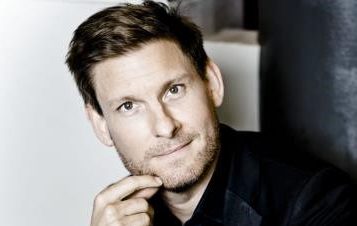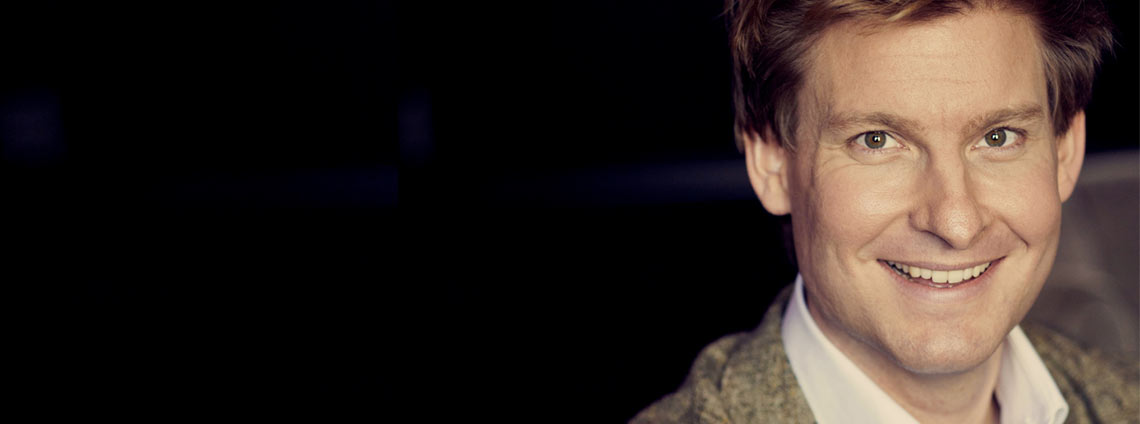The Chan Centre: Telus Studio Theatre | Map
Kristian Bezuidenhout, fortepiano
“Bezuidenhout still shapes and shades this music with almost romantic finesse, and releases the historic instrument’s full expressive potential. In every register the sound changes: proudly growling down in the bass, bird-bright in the treble reaches, round and velvety in the middle.” – The Times, London
South African-born, London-based Kristian Bezuidenhout is ranked among the leading keyboard players of his generation. Although he’s best known for his fortepiano interpretations of music by Mozart, his repertory also includes works by Schubert, Schumann and Mendelssohn. EMV is thrilled to collaborate with the Vancouver Recital Society in bringing this inspiring and captivating young artist to Vancouver.
Programme
MOZART Sonata in E flat major, K. 282
MOZART Suite in C major K. 399
MOZART Minuet in D major, K. 355
MOZART Gigue in G major, K. 574
MOZART Rondo in A minor, K. 511
Interval
MOZART Fantasie in C minor, K. 475
MOZART Sonata in A major, K. 331
Programme notes
Recitals these days are frequently held in vast concert halls with a seating capacity of more than 1,500 persons. Pianists usually perform on grand pianos with 88 keys and more than seven octaves. This evening, we sit in a theatre that holds just 275 persons. We step into Mozart’s world, and leave the 21st century orbit of incessant sound assaults, and retune our ears, our awareness and sensibility. From the first measures of the opening work on this evening’s all-Mozart program, performed on an instrument that many listeners hear for the first time, we immediately become participants in the unique sound world of the 18th century.
The fortepiano is a keyboard instrument made almost exclusively of wood. The sound of the fortepiano is produced when the hammers strike the strings, in contrast to the harpsichord in which the strings are plucked. The keys of a fortepiano are shorter and narrower than those of a modern piano. The strings run in the same direction as the grain of the soundboard, from the keyboard directly to the rear of the instrument. This “straight stringing” gives the fortepiano a matchless clarity and transparency of sound. The earliest fortepianos had a range of four octaves. By the mid 18th century the keyboard had been extended to five.
The fortepiano of Mozart’s time had evolved significantly from the first keyboard instrument of its kind, attributed to the Italian instrument maker Bartolomeo Cristofori (1655-1732). Cristofori was the custodian of musical instruments at the Florence court of Ferdinando de’ Medici, a devoted patron of music. Cristofori’s invention lay in his design of the instrument’s action: the escapement – a mechanism that allowed the hammer to strike the string and instantly rebound, leaving the string free to resonate. An inventory of instruments in the Medici collection, dated 1700, mentions an “arpicimbalo,” i.e., an instrument resembling a harpsichord, “newly invented by Bartolomeo Cristofori with hammers and dampers… and a range of four octaves.” An article in the Venetian Giornale de’letterati d’Italia in 1711, describes Cristofori’s instrument as a “gravicembalo col piano e forte” (“harpsichord with soft and loud”), the first time it was called by its eventual name, pianoforte. The oldest surviving Cristofori instrument (1720) is located in New York’s Metropolitan Museum.
During the 18th century, significant technical improvements were made to Cristofori’s escapement, as well as to the damper – the mechanism that controls the stopping of the string’s vibration. A damper had been devised by Gottfried Silbermann, (1683-1753) but it required the use of the player’s hands in order to function, and thus could only be deployed during pauses in the music. The fortepiano developed by the outstanding Augsburg instrument builder Johann Andreas Stein (1728-1792) incorporated a damper that was controlled by a knee lever, pushing upward on the lower surface of the instrument – similar to the effect of a sustaining pedal on a concert grand piano.
In 1777, 19 year old Wolfgang Amadeus Mozart, accompanied by his mother Anna Maria, visited Stein’s Augsburg workshop, during a concert tour that also took them to Munich, Mannheim, and Paris. (Father Leopold remained at home in Salzburg.) The instrument that Wolfgang discovered in Stein’s atelier inspired him with its expressive possibilities. In a letter to his father, dated October 17, 1777, he refers enthusiastically to Stein’s improvements:
“No matter how I decide to touch the keys, the tone is always even. It never jars, it is never stronger or weaker or entirely absent; in a word, it is always even. His instruments have this special advantage over others that they are made with escape action. Only one maker in a hundred bothers about this. But without an escapement it is impossible to avoid jangling and vibration after the note is struck. When you touch the keys, the hammers rebound at the instant they strike the strings, whether you hold down the keys or release them … The device…which you work with your knee is better on his than on other instruments. I have only to touch it and it works; and when you shift your knee the slightest bit, you do not hear the least reverberation.”
After moving to Vienna some five years later, Mozart purchased a fortepiano from Anton Walter – Vienna’s most important instrument builder – whose instruments had a more powerful sound than those built by Stein. Walter’s instruments were the deluxe keyboard instruments of the period. The force needed to depress a key on a Viennese fortepiano was only about a fourth of what is needed on a modern piano, and the descent of the key only about half as much. Mozart used a Walter piano during the performances of his mature piano concertos. Beethoven played a Walter piano, as did Schubert.
This evening’s program offers a dazzling, kaleidoscopic view of Mozart’s compositions for solo keyboard.
The Sonata in E flat major, K. 282 was written in 1774 by the 18 year old Mozart while in Munich for the production of his opera La finta giardiniera. The poignant mood of the first movement is lightened by the charm and wit of the Minuet and Rondo that follow.
The Suite in C major, K. 399, an homage to the Baroque, was composed soon after Mozart moved to Vienna in 1782, and sometimes bears the subtitle: “In the style of Handel.” Mozart completed the first three movements: Overture – Allemande – Courante. The Sarabande, left unfinished, was completed by the American pianist Robert Levin.
The enigmatic and contemplative nature of the Menuet in D major, K. 355 is surprising – quite removed from the usual association of the Menuet as a slow, stately 18th century dance. The astounding “Eine Kleine Gigue,” K. 574, just thirty-eight measures in length, is remarkable for the spare, angular quality of composition. Pianist Alfred Brendel, in his A Pianist’s A-Z, underscores the “chromatic boldness” of both the Menuet K. 355 and the Gigue K. 574. Tchaikovsky quoted these works in the first two movements of Mozartiana, his homage to Mozart, written in 1887 to mark the centenary of the premiere of Don Giovanni.
The Rondo in A minor K. 511 was composed in Vienna in the spring of 1787, between the composition of The Marriage of Figaro and Don Giovanni. In his biography of Mozart, British musicologist Arthur Hutchins wrote: “It is hard not to regard the resignation of this Rondo as personal – resignation to a despair beyond tears…Measured by the clock, its length is unusual, yet the player finds himself lingering over it and wishing it were even longer. “
The astonishing Fantasy in C minor, K. 475 unfolds with extreme contrasts, mercurial shifts of mood, and continuous changes of tempo and expression. It was dedicated to Madame Therese von Trattner, a pupil of Mozart and the wife of his wealthy and influential Viennese landlord. Musicologist Alfred Einstein writes: “The Fantasy gives us the truest picture of Mozart’s mighty power of improvisation – his ability to indulge in the greatest freedom and boldness of imagination, the most extreme contrast of ideas, the most uninhibited variety of lyric and virtuosic elements.”
The Sonata in A major, K. 331 is the second of three sonatas composed in 1783, and may have been composed with Mozart’s sister Maria Anna (Nannerl) in mind. The well-known last movement, the Rondo alla Turca – took its inspiration from the popularity in Vienna at that time of “pseudo-Turkish” music. Mozart’s Violin Concerto K. 291 and his opera The Abduction from the Seraglio displayed the fashion for the alla Turca style.
Mozart was one of the greatest keyboard virtuosi of his time. In today’s whirlwind days of the internet, what would we not give to possess a vintage studio recording of Mozart at the keyboard, or a solo recital, recorded live and uploaded on YouTube! However, failing this, we do possess an extraordinary description of Mozart’s genius both as composer and performer in this remarkable report published in the Augsburg newspaper Augsburgische Staats-und Gelehrten Zeitung, October 28, 1777:
“Herr Chevalier Mozart, a son of the famous Salzburg musician… gave a concert on the fortepiano…Everything was extraordinary, tasteful and admirable. The composition is thorough, fiery, manifold and simple; the harmony so full, so strong, so unexpected, so elevating; the melody so agreeable, so playful, and everything so new; the rendering on the fortepiano so neat, so clean, so full of expression, and yet at the same time extraordinarily rapid so that one hardly knew what to give attention to first… all the hearers were enraptured. One found here mastery in the thought, mastery in the performance, mastery in the instruments, all at the same time.”
© Frances Heinsheimer Wainwright

Kristian Bezuidenhout, fortepiano
Kristian Bezuidenhout is one of today’s most notable and exciting keyboard artists, equally at home on the fortepiano, harpsichord, and modern piano. Born in South Africa in 1979, he began his studies in Australia, completed them at the Eastman School of Music, and now lives in London. After initial training as a pianist with Rebecca Penneys, he explored early keyboards, studying harpsichord with Arthur Haas, fortepiano with Malcolm Bilson, and continuo playing and performance practice with Paul O’Dette. Kristian first gained international recognition at the age of 21 after winning the prestigious first prize, and audience prize in the Bruges Fortepiano Competition.
Kristian is an Artistic Director of the Freiburger Barockorchester and Principal Guest Director with the English Concert. He is a regular guest with the world’s leading ensembles including Les Arts Florissants, Orchestra of the Age of Enlightenment, Orchestre des Champs Elysées, Koninklijk Concertgebouworkest, Chicago Symphony Orchestra & the Leipzig Gewandhausorchester; and has guest-directed (from the keyboard) the Orchestra of the Eighteenth Century, Tafelmusik, Collegium Vocale, Juilliard 415, Kammerakademie Potsdam and Dunedin Consort (St Matthew Passion).
He has performed with celebrated artists including John Eliot Gardiner, Philippe Herreweghe, Frans Brüggen, Trevor Pinnock, Giovanni Antonini, Jean-Guihen Queyras, Isabelle Faust, Alina Ibragimova, Rachel Podger, Carolyn Sampson, Anne Sofie von Otter, Mark Padmore & Matthias Goerne.
Kristian’s rich and award-winning discography on Harmonia Mundi includes the complete keyboard music of Mozart (Diapason d’Or de L’année, Preis der Deutschen Schallplattenkritik, & Caecilia Prize); Mozart Violin Sonatas with Petra Müllejans; Mendelssohn and Mozart Piano Concertos with the Freiburger Barockorchester (ECHO Klassik); Beethoven, & Mozart Lieder, and Schumann Dichterliebe with Mark Padmore (Edison Award). In 2013 he was nominated as Gramophone Magazine’s Artist of the Year. Recent releases include Winterreisse with Mark Padmore, and Bach’s sonatas for violin and harpsichord with Isabelle Faust.
In the 2018/19 season, Kristian play-directs programmes with Scottish Chamber Orchestra, Irish Baroque Orchestra, as well as Freiburger Barockorchester and English Concert. As a soloist he performs with Cleveland Orchestra/Cohen, Swedish Chamber Orchestra/Dausgaard, London Symphony Orchestra/Gardiner, Deutsches-Sinfonie Orchester Berlin/Ticciati and Orchestre de Paris/Harding. Solo recitals and chamber music (with Rachel Podger, Sol Gabetta and Chiaroscuro Quartet) take him to Paris, Amsterdam, Madrid, Vienna, New York, Washington DC, Montreal, Vancouver, Zurich and Oxford.



